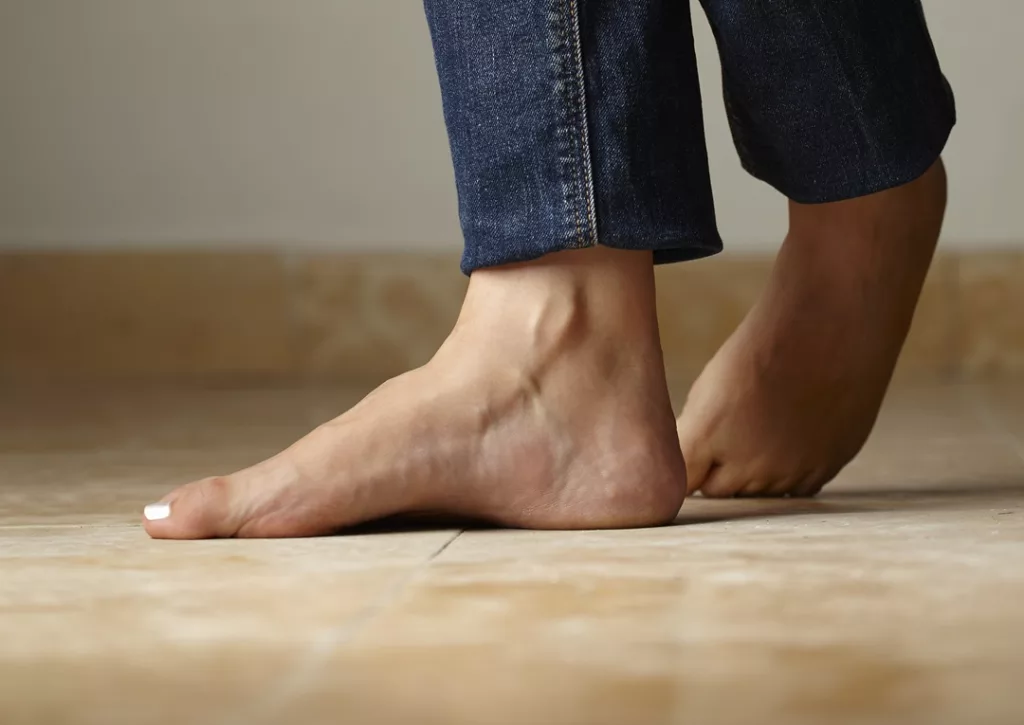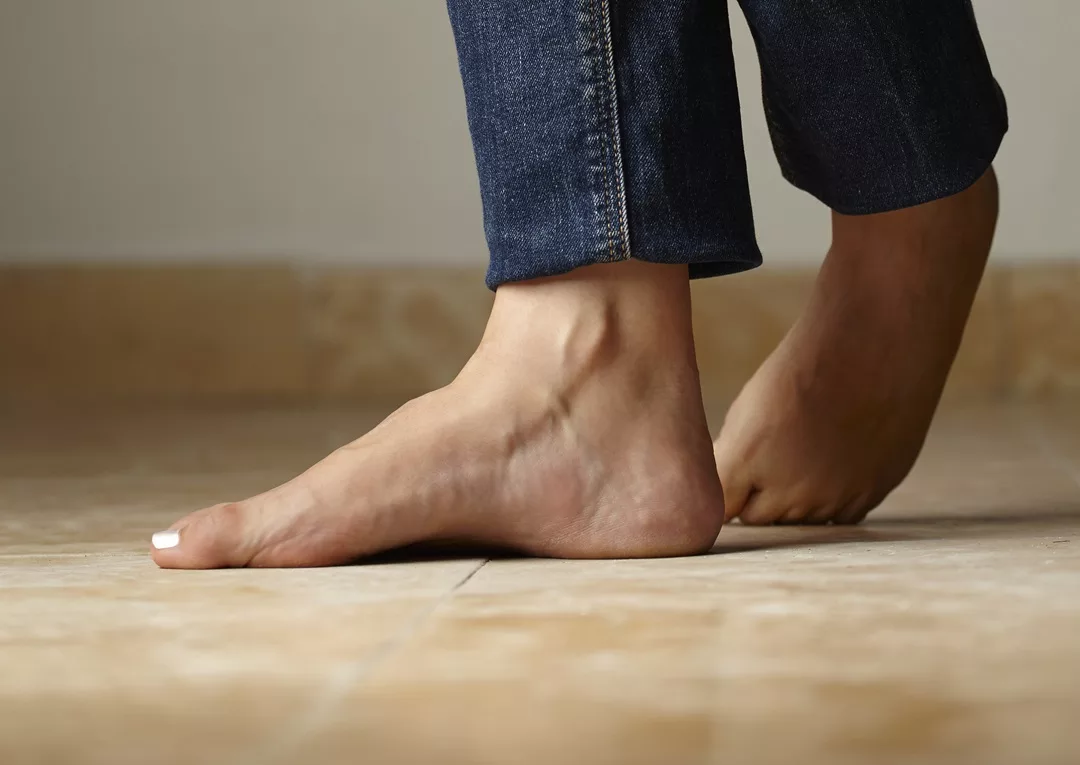What Is Equinus?
Equinus refers to a condition where the upward bending motion of the ankle joint is restricted. Those with equinus lack the flexibility to bring the top of the foot towards the front of the leg. It can affect one or both feet, with one foot often experiencing more limited movement than the other.
Individuals with equinus adapt to their restricted ankle motion, leading to potential complications in the foot, leg, or back. The common compensatory mechanisms include flattening of the arch, early heel elevation during walking leading to increased pressure on the ball of the foot, walking on toes, or adopting abnormal bending at the hip or knee.
Causes
Several factors can contribute to limited ankle motion. Tightness in the Achilles tendon or calf muscles, including the soleus and gastrocnemius muscles, is a primary cause. This tightness can be congenital or inherited, or it may result from wearing high-heeled shoes, extended use of casts, or crutches. Conditions like diabetes can affect the Achilles tendon, leading to tightness. Equinus can also result from bony obstructions in the ankle joint, such as bone fragments from a previous injury or structural issues like leg length discrepancy. Rarely, spasms in the calf muscle can cause equinus, indicating an underlying neurological problem.
Foot Problems Associated with Equinus
Compensatory strategies for equinus can lead to various foot complications, including:
- Plantar fasciitis (heel and arch pain)
- Calf cramping
- Achilles tendonitis
- Metatarsalgia (pain or callusing on the ball of the foot)
- Flatfoot
- Midfoot arthritis
- Pressure sores on the ball of the foot or the arch
- Bunions and hammertoes
- Ankle pain
- Shin splints
Diagnosis
Most individuals with equinus are often unaware of their condition, seeking medical assistance for associated foot problems. Diagnosis involves an evaluation of the ankle range of motion with the knee in flexion and extension. X-rays may require consideration, and, in certain instances, healthcare providers might suggest referring for a neurological evaluation.
Non-surgical Treatment
Treating equinus involves managing associated symptoms and employing various strategies, such as:
- Night splints to alleviate calf muscle tightness
- Heel lifts to reduce stress on the Achilles tendon during walking
- Arch supports or custom orthotic devices to ensure proper weight distribution and muscle/tendon balance control
- Physical therapy involves exercises to stretch the calf muscles
When Is Surgery Needed?
Surgery may be necessary in cases where equinus is linked to a tight tendon or bone obstruction. The type of surgical procedure required will be determined by the foot and ankle surgeon, and tailored to the specific needs of the patient.





